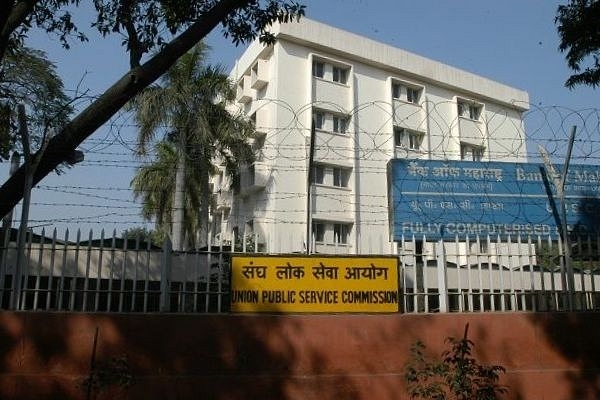News Brief
UPSC Civil Services Mains 2020 Exam GS 1 Analysis: The Key Is To Balance ‘Old’ And ‘New’ To Ace The Paper
- The paper each year testifies that candidates who study ‘mindfully’ stand to benefit. It is not necessary to study in great depth and breadth, but with great understanding.

Union Public Service Commission (UPSC) Building (UPSC House) in New Delhi, India. (Yasbant Negi/The India Today Group/Getty Images)
The UPSC Civil Services (Main) Exam (CSE Main) 2020 ended on 17 January with the Optional subject papers.
The total candidates allowed to appear for UPSC Main exam are around twelve to thirteen times the number of the vacancies. For UPSC 2020, the total number of vacancies was 796 so accordingly around 10 thousand candidates would have given the UPSC Mains 2020.
The CSE Main exam is subjective. It consists of total nine papers. Four of these are the General Studies (GS) papers. One is the Essay and two are on the Optional subject that a candidate chooses. The remaining two paper on languages - one is English and another one is chosen by the candidate - are qualifying in nature.
GS 1 paper analysis
The GS1 paper can be called medium to tough with a sprinkling of easy questions.
Some questions could have been done straight from standard notes like the ones on Pala architecture, location of iron and steel industries, geophysical features of circum-pacific zone, interlinking of rivers. Students who sincerely prepared their notes would have written these well.
Certain other questions were from the issues that were in the news all year. A candidate could have written these well if they studied current affairs and practiced answer writing. These include the questions on digital initiatives in education, flooding of cities, COVID-19 pandemic and poverty, desertification. melting of Himalayan glaciers. The news cycle was pretty much flooded by opinion pieces on these issues. A candidate who knows how to aggregate current affairs and use it in the answer would have done well in these type of questions.
Now, the relatively tougher questions. These include Indian philosophy, tradition shaping the monuments and their art; Persian literary sources of medieval India; diversity and pluralism in India under threat due to globalisation etc. Some of these were tough because only a person with deep knowledge could answer the question doing justice to both sides of the story. For example, Customs and traditions and obscurantism. Some these were harder because they covered a portion usually neglected by the aspirants, like the Persian literature. Some others like diversity, pluralism and globalisation require imaginative thinking.
Overall, for GS1 paper, candidates should adopt a strategy of mixing the ‘old’ and the ‘new’.
The ‘old’ consists of the usual issues like Indian history, women, poverty, climate change etc. The ‘new’ consists of the issues that have been in the news. The paper each year testifies that candidates who study ‘mindfully’ stand to benefit. It is not necessary to study in great depth and breadth, but with great understanding.
One should always think of the questions that can come while studying the syllabus in GS 1, and practice new forms of questions, out of the box questions. These should not be ignored thinking “these type of questions don’t come”.
The GS1 syllabus is vast if one tries to complete it fully. It includes Indian history, both pre and post independence, world history, geography, which is vast in itself, Indian society etc. Therefore, cost benefit analysis is important. Candidates should make a strategy balancing their strengths and weaknesses.
For example, the society portion can be done by the current affairs itself if the basics are clear. There is no need to read a book separately.
Candidates can look at last year papers and prioritise questions accordingly. For example, once in a while a question is asked on the governor generals in history like Curzon, Cornwallis, Dalhousie etc. Candidates can dedicate two hours in a day to prepare these separately at one place. so that they can revise it the day before the exam. Similarly, candidates should try to write the ‘assessment’, ‘impact’, and ‘legacy’ of major events of the freedom struggle.
It is also important to practice papers before the exam. The aim shouldn’t just be to complete the paper or attempt sufficient questions, but also to write quality answers. The candidates need to have utmost sincerity and consistency in the preparation process as it is very hard to make the cut.
In the next part, we will analyze the GS-2 paper of the UPSC CSE Mains 2020.
Introducing ElectionsHQ + 50 Ground Reports Project
The 2024 elections might seem easy to guess, but there are some important questions that shouldn't be missed.
Do freebies still sway voters? Do people prioritise infrastructure when voting? How will Punjab vote?
The answers to these questions provide great insights into where we, as a country, are headed in the years to come.
Swarajya is starting a project with an aim to do 50 solid ground stories and a smart commentary service on WhatsApp, a one-of-a-kind. We'd love your support during this election season.
Click below to contribute.
Latest